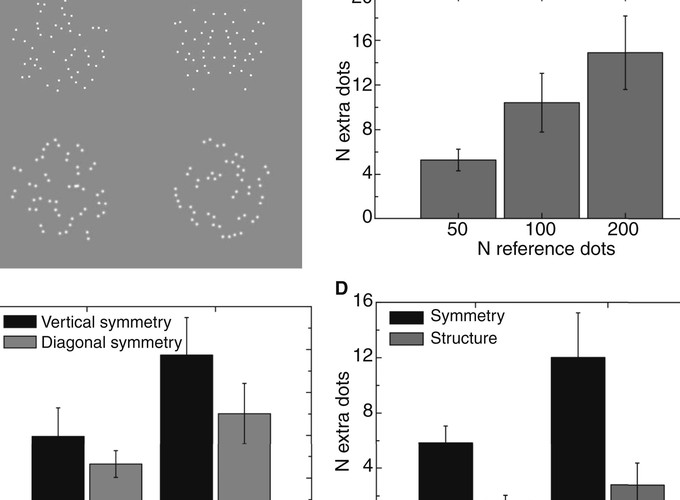Abstract
Symmetry is a ubiquitous feature in the visual environment and can be detected by a variety of species, ranging from insects through to humans. Here we show it can also bias estimates of basic scene properties. Mirror (reflective) symmetry can be detected in as little as 50 ms, in both natural and artificial visual scenes, and even when embedded within cluttered backgrounds. In terms of its biological relevance, symmetry is a key determinant in mate selection; the degree of symmetry in a face is positively associated with perceived healthiness and attractiveness ratings. In short, symmetry processing mechanisms are an important part of the neural machinery of vision. We reveal that the importance of symmetry extends beyond the processing of shape and objects. Mirror symmetry biases our perception of scene content, with symmetrical patterns appearing to have fewer components than their asymmetric counterparts. This demonstrates an interaction between two fundamental dimensions of visual analysis: symmetry and number. We propose that this numerical underestimation results from a processing bias away from the redundant information within mirror symmetrical displays, extending existing theories regarding redundancy in visual analysis.
